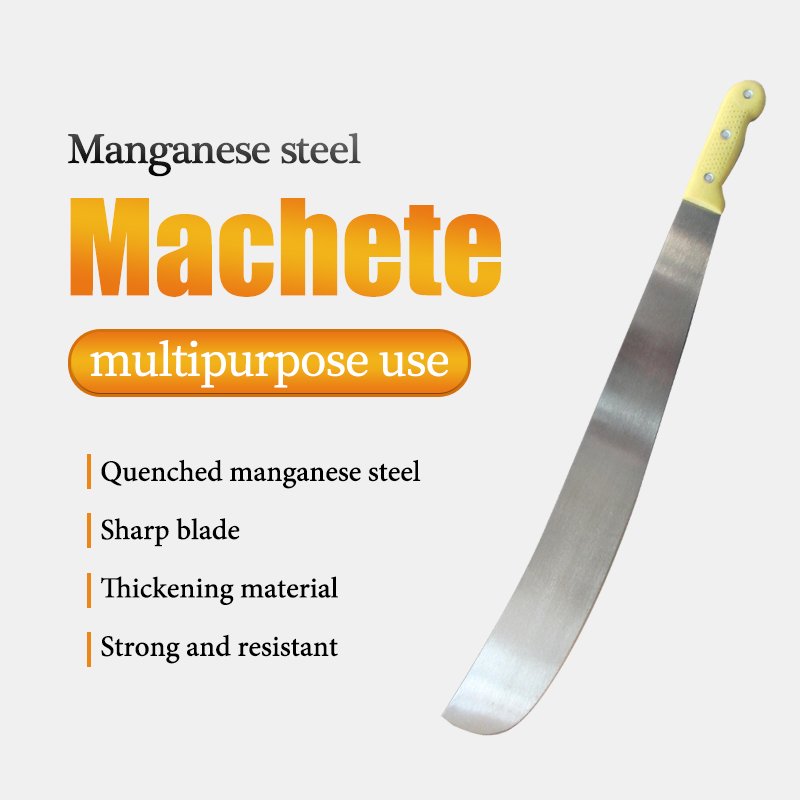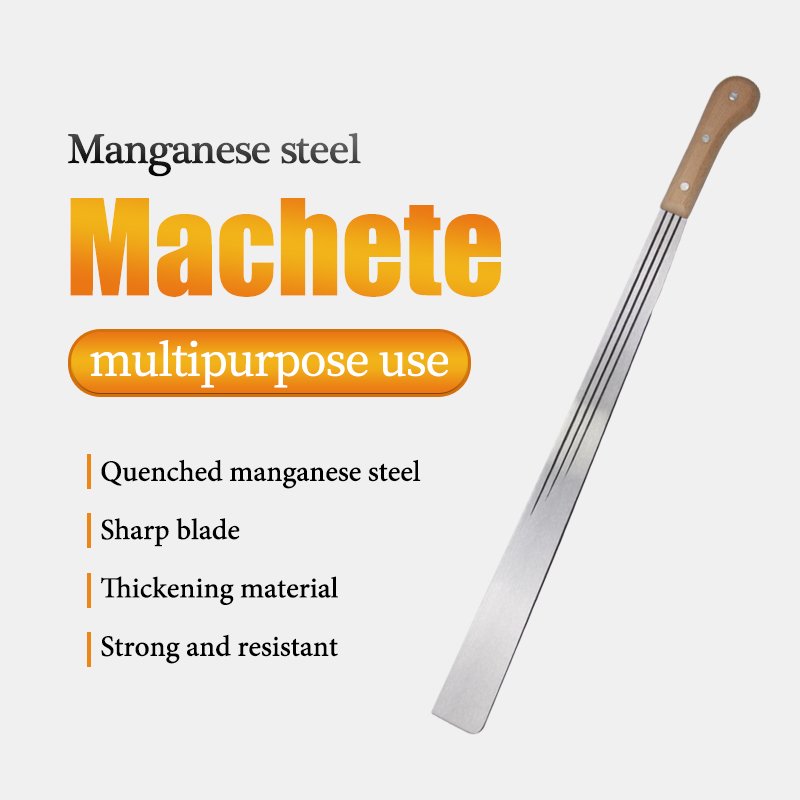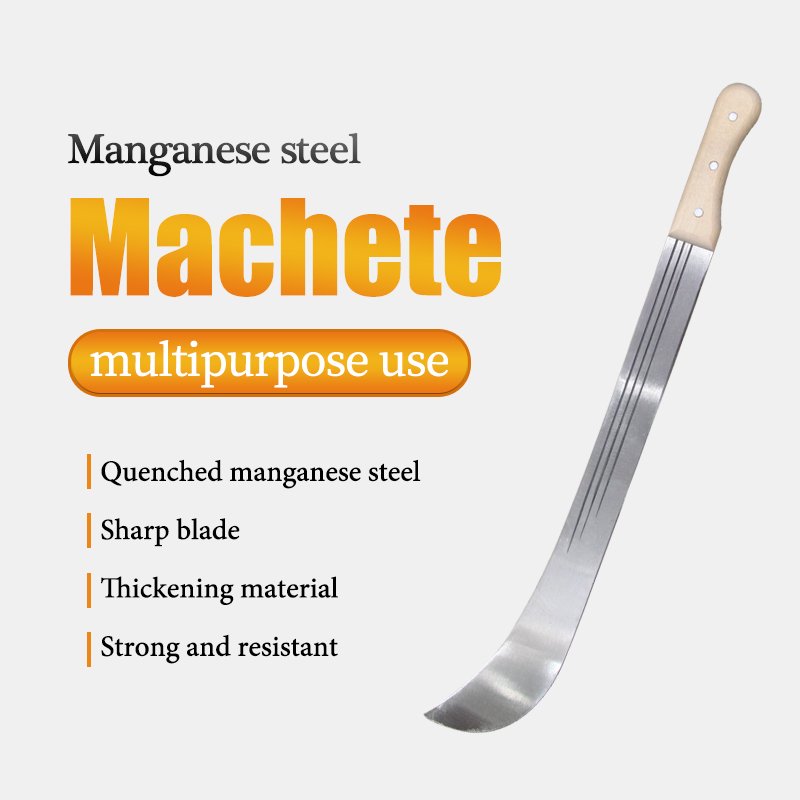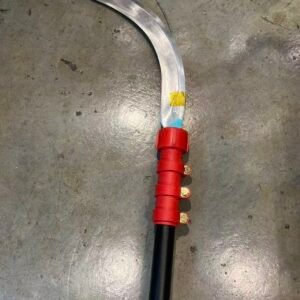1. Why the Golok Machete Remains a Trusted Tool Across Africa
The golok machete has earned a permanent place in the hands of countless agricultural and outdoor workers across Africa. Its effectiveness in clearing thick vegetation, harvesting crops, and handling day-to-day field tasks is unrivaled, particularly in regions where durable, reliable cutting tools are a necessity.
This traditional blade, originally from Southeast Asia, is prized for its unique weight distribution and wide, slightly curved blade. In countries like Nigeria, Ghana, and Tanzania, farmers prefer the golok design over other machete types because of its ability to cut through fibrous material like sugarcane, bamboo, and dense undergrowth with minimal effort. The heavy forward curve allows the user to generate powerful strikes without exerting excessive force, a critical benefit in hot climates where labor fatigue is a concern.
Beyond agriculture, the golok machete is also used by charcoal producers, construction workers, and even in rural households for wood preparation. Its versatility makes it suitable for a wide range of applications—from chopping wood for cooking fires to clearing footpaths in overgrown environments. Many African users find the golok machete to be more dependable than lighter blades that bend or dull quickly under pressure.
Its popularity continues to grow as more buyers in Africa discover the benefits of high-quality, factory-produced golok machetes. The tool’s reputation as a “workhorse blade” for the African terrain is well-earned, and the demand for durable versions suited to tough, repeated use is driving the need for factory-direct sourcing, eliminating middlemen and increasing access to affordable, quality tools.

2. How to Choose the Best Golok Machete for Tough African Conditions
Selecting the best golok machete for African field use requires attention to detail, particularly when it comes to materials, size, and handling comfort. These factors determine not just performance but also the tool’s longevity in the harsh environmental conditions found across many African regions.
Material selection is paramount. High carbon steel is a common choice for those seeking long-lasting sharpness and impact resistance. It is ideal for heavy-duty chopping and can be easily re-sharpened in the field using simple tools. While stainless steel versions are available, they may not hold up as well under the demanding tasks faced daily by African farmers and land workers.
Blade size also plays a crucial role. For instance, longer blades between 14 to 18 inches are suitable for clearing bushes or cutting thick sugarcane stalks. Shorter options may be preferred for precise work, such as pruning or harvest tasks requiring more control. The curved shape of the golok blade creates a slicing motion that enhances cutting efficiency, especially when clearing thick vegetation.
Grip comfort and safety are also essential. The best golok machete will have a secure, ergonomic handle—preferably made of hardwood or textured plastic—to ensure a strong grip even when wet. Some models include handguards or finger grooves to reduce slippage and minimize fatigue during long hours of use.
For buyers sourcing machetes for local retail or agricultural supply stores, it is also important to consider price-to-performance ratios. Tools must be affordable, but without compromising on quality. Working with a factory that understands the specific needs of African environments ensures that every machete supplied performs reliably in the field.

3. Our Factory-Direct Golok Machete for Sale – Built for Africa
We are proud to offer a range of golok machete for sale, designed and manufactured with Africa’s demanding outdoor and agricultural environments in mind. As a direct manufacturer, we eliminate unnecessary distribution layers and offer highly competitive pricing with consistent product quality, ideal for wholesalers, retailers, and government procurement agencies.
Our factory specializes in several types of machetes, tailored for various field applications:
- Heavy-Duty Field Model: Featuring a thick, forward-weighted blade made from heat-treated high carbon steel. It is designed for cutting through heavy undergrowth, bamboo, and sugarcane. A solid wood or polypropylene handle ensures a firm grip under rugged use.
- Agricultural Utility Model: This version is lighter, with a slightly shorter blade and ergonomic design suited for quick clearing, harvesting, and day-to-day farm use. The blade has a corrosion-resistant coating, and the grip includes a protective handguard.
- Budget-Friendly General Model: Built for wide distribution in local markets, this option provides excellent value for money. It’s a no-frills, durable parang machete designed for large-scale supply to rural communities, ideal for aid programs or NGO sourcing.
All models are available in bulk with customized logo stamping, private labeling, and export-ready packaging options. We handle full container loads and LCL shipments, offering flexible delivery schedules and multilingual support.
Our products are currently in use across markets in West, Central, and East Africa, with repeat clients from agricultural cooperatives, importers, and hardware distributors. For every golok machete for sale from our factory, we ensure strict quality control, ISO-certified processes, and product traceability—so our African clients can purchase with confidence.

4. The Legacy of the Indonesian Golok Machete and Its African Popularity
The Indonesian golok machete carries with it a rich tradition of craftsmanship and functionality. Its roots go back centuries, originating from the Indonesian archipelago where it was used not only as a utility tool but also as a cultural weapon and symbol. Over time, its design has proven to be one of the most effective blade shapes for tropical environments—an attribute that has led to its widespread adoption across Africa.
Unlike many machetes with narrow, straight blades, the Indonesian golok is defined by its curved, weight-forward design. This enables deeper penetration and more powerful cuts, making it ideal for clearing dense bush or processing fibrous plant materials. African buyers have taken a strong liking to this design, noting how well it handles local vegetation types such as plantains, sugarcane, palm fronds, and even light tree branches.
Our factory sources design inspiration from authentic Indonesian golok styles, then modifies them to meet the practical needs of African users. This includes reinforced spines for durability, high-impact handles for rough usage, and edge retention treatments suited for heavy workloads. We also adapt certain lengths and thicknesses to align with region-specific preferences, whether for East African bush clearing or West African cocoa farming.
As awareness grows, the Indonesian golok machete is no longer viewed as a niche import—it is quickly becoming a mainstay in African farm tool collections. Buyers looking for a tool that combines heritage design with modern durability are increasingly turning to this proven format.
By bringing Indonesian-inspired craftsmanship into African agriculture through factory-direct supply, we provide tools that are not only affordable but culturally and practically relevant—bridging continents through the shared need for reliable performance.

About us:
Dingzhou Gemlight Cutting Tools Co., Ltd.,With a solid foundation since 1990, Gemlight machete is a trusted name in the field of cane machete manufacturing. We focus on R&D, design and production to produce high quality wholesale china machete and shovel,hoe,pickaxe,sickle,farm tools.
Gemlight Machete factory Based in Baoding, Hebei, China, we benefit from efficient logistics and fast delivery. Our products have been well received in more than 50 countries, thanks to our commitment to customer satisfaction




